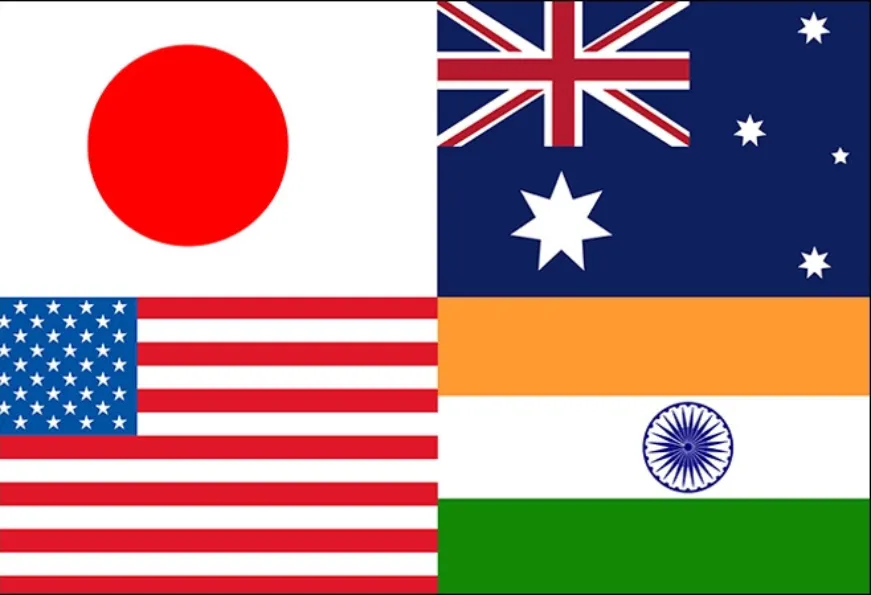
On 24 May 2022, the four leaders of the Quad—a strategic security dialogue between Australia, India, Japan, and the United States (US)—met in Tokyo, reaffirming their commitment to a free, open, and rules-based Indo-Pacific, “Individually and together, we will respond to the challenges of our time, ensuring that the region remains inclusive, open, and governed by universal rules and norms”. Central to this vision are technology standards, and the 2022 Quad Joint Leaders Statement builds on the commitments made at the 2021 summit—the leaders launched The Common Statement of Principles on Critical Technology Supply Chains as well as a new, as-yet-mysterious body called the International Standards Cooperation Network (ISCN). The Quad statement epitomises the fact that technology standards are not simply technical, but laden with values, politics, and power.
The Life and Death of 5Gi
Standards define and limit the development pathways countries take, and this logic underpinned India’s attempt at creating its own 5G standards, 5Gi. The standards, proposed by the Telecommunications Standards Development Society of India (TSDSI), were meant to address coverage issues in remote, rural areas. The core feature of 5Gi was Low Mobility Large Cell (LMLC), which would increase cell range, and be useful in areas where building numerous base stations was not feasible due to poor infrastructure, terrain, and/or cost. LMLC was not a departure from India’s ongoing engagement with 5G standards: It was approved by the ITU in 2017 as a mandatory requirement but was not accepted as a part of 3GPP Release 15. Likely as a means of exerting pressure on 3GPP, the TSDSI instead developed and submitted 5Gi to ITU, and the standards became part of the IMT 2020 set of standards. Subsequently, 3GPP announced it would integrate 5Gi into Release 17.
The standards, proposed by the Telecommunications Standards Development Society of India (TSDSI), were meant to address coverage issues in remote, rural areas.
As of January 2022, 5Gi is functionally dead after the TSDSI dropped it as a national standard. However, it did not go down without creating waves. Following the 5Gi announcement, several international trade groupings called the new standards detrimental to the Quad’s nascent cooperation on 5G, citing the necessity of adopting 3GPP as is.
Yet, 3GPP’s eventual capitulation regarding LMLC would indicate that this was not just an issue of technical feasibility. India is relatively new to 3GPP—it was granted observer status in 2014 and became an organisational partner in 2015. Aside from China, India is the only developing country that has this status.
Table 1: Composition of 3GPP
| Organisation |
Membership |
Representation |
| 3GPP |
Seven organisational partners from Japan, the US (ATIS),
China (CCSA), European Union (ETSI), India (TDSI), South Korea (TTA),
and Japan (ARIB, TTC).
782 individual members.
|
Europe: 387
China: 210 individual
members
U.S.: 60 individual
Members
India: 55 individual members
Japan: 42 individual members
South Korea: 26
|
Source: Data pulled by the author from 3GPP website<1>
Arguably, India was able to effectively pressure the 3GPP to include LMLC through its ongoing engagement with the ITU, its rapidly growing presence at the 3GPP, as well as its consequential role as a partner in emerging global coalitions, including Quad processes. The rest of the developing world does not have the same level of access or capacity: 3GPP consists of a total of three members from other developing countries, namely Botswana, Indonesia, and South Africa.
Wicked problems need wicked solutions
The other way the story of 5Gi is much larger than one technicality has been the way it was co-opted into the great Aatmanirbharta (self-sufficiency) project. In a speech earlier this month to celebrate 25 years of the Telecom Regulatory Authority of India (TRAI), Prime Minister Modi lauded 5Gi<2>:
“The creation of our own 5G standard in the form of 5Gi is a proud moment for the nation. This will enable us to meet the goal of bringing 5G technology to every village. In the 21st century India, connectivity is what will make rapid national progress possible.”
In this sense, 5Gi has become part of a kind of techno-nationalist mythology, as well as a demonstration of India’s ambitions to be a prominent actor in the shaping of global technology norms and regimes.
The 5Gi case shows us that tech standards are complex, and as the Quad embarks on a new chapter on standards creation, shared values will not always translate into frictionless cooperation given the specific quandaries each country faces, and the distinct, privileged positions some hold. Responding to this complexity demands nuance, especially if the Quad hopes to engage meaningfully with other countries in the Indo-Pacific.
<1> Of course, membership is not the only way in which countries are able to exert influence in standards bodies. Organisational partners may encourage members to vote as a bloc, provide crucial funding for the standards-setting body, and have key leadership positions in working groups. For more, see.
<2> The original speech is in Hindi. Translation is the author’s own.
The views expressed above belong to the author(s). ORF research and analyses now available on Telegram! Click here to access our curated content — blogs, longforms and interviews.




 PREV
PREV


